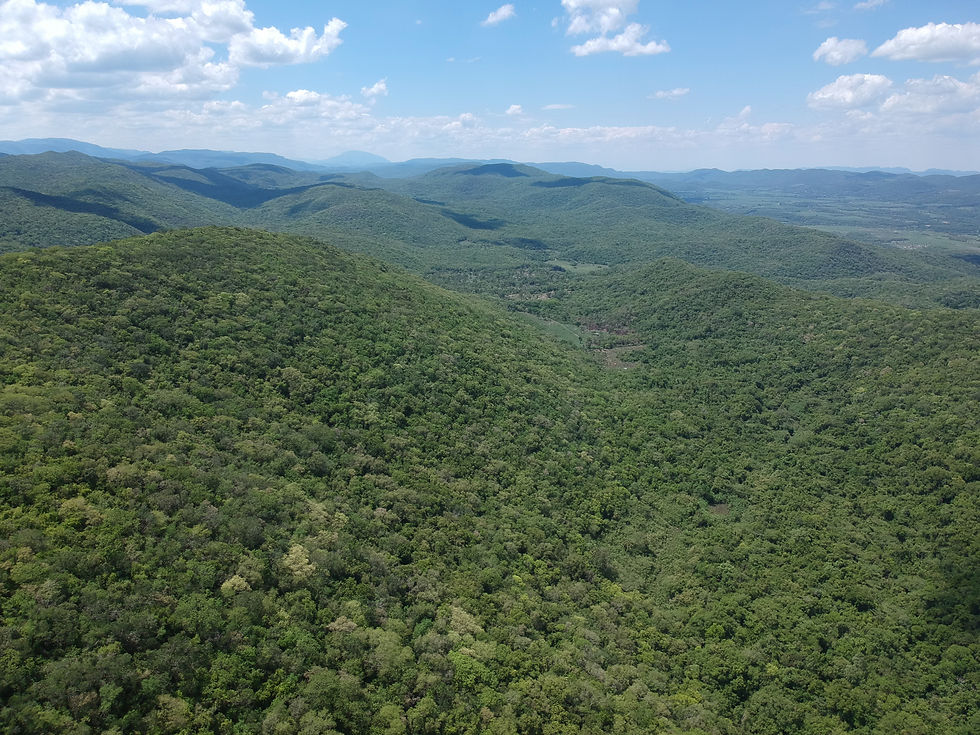The Centro de Agricultura Regenerativa de la Huasteca (CDARH) has spent over four decades acquiring and preserving around 1,500 acres of forested land in Mexico’s Eastern Sierra Madre Mountains, creating the Finca Oasis Forest Preserve. Situated in the northern region of the biodiversity-rich Veracruz Moist Forest ecoregion, CDARH acts as a hub for administrative support, material supply, tree propagation, research, and staffing for this conservation effort.
The mission is focused on the restoration and preservation of degraded areas, which is now gaining momentum thanks to recent funding from Toyota Motor North America (TMNA) and the Pollinator Partnership (P2) in collaboration with Terra Advocati and the regional technical university (Instituto Tecnológico de Ciudad Valles).

Forest Restoration and Conservation Goals:
1. Preserve the biodiversity of the Veracruz Moist Forest through protection and restoration efforts at the Finca Oasis Forest Preserve.
2. Combat pollinator decline by planting native, pollinator-friendly tree species in degraded areas of the preserve.
3. Conduct scientific research to improve tree propagation techniques and enhance the reforestation process.
4. Compare biodiversity and forest health between restored and virgin areas to refine future restoration practices.
5. Implement monitoring systems to track local fauna populations and protect endangered species within the preserve.
Achieving These Goals:
In June of this year, CDARH received critical funding from Toyota Motor North America (TMNA) and the Pollinator Partnership (P2), allowing the center to expand its reforestation efforts. With this award, CDARH initiated the propagation of native, pollinator-friendly trees that will be planted in degraded areas of the preserve. The first major steps included collecting native tree seeds and constructing a shade structure to support seed propagation, vital to the success of their reforestation strategy.
Collaboration plays a central role in this project. Terra Advocati, the regional technical university (Instituto Tecnológico de Ciudad Valles), and local community members have joined forces with CDARH to tackle the challenging terrain and remote areas of the preserve.
Amanda Lewis Vega, an expert in plant physiology and seasoned researcher, leads the scientific aspect of the project. She, along with a team of faculty and students from the university’s environmental engineering department, is conducting experiments on seed germination using locally sourced soil mixes to maximize healthy tree growth.
Further research projects, supported by TMNA and P2, aim to explore and compare biodiversity levels, forest floor biomass, and tree health between virgin forest areas and previously reforested zones that contain a mix of tree species. By studying the differences, CDARH hopes to fine-tune its restoration approach, ensuring that their reforested areas foster long-term biodiversity and ecosystem health.

In addition to tree propagation, the Finca Oasis Forest Preserve is expanding its efforts to monitor local wildlife, including crucial pollinator species and endangered fauna. The installation of motion-sensing cameras this year, thanks to CARH’s initiative, will help gather valuable data on the region’s wildlife, and faculty from the university have expressed interest in collaborating on fauna conservation projects. These measures reflect a growing awareness of the interconnectedness of species within the ecosystem, particularly the importance of pollinators in maintaining healthy forests.

The restoration efforts at the Finca Oasis Forest Preserve, led by CDARH and its collaborative partners, demonstrate a deep commitment to reversing biodiversity loss and protecting vital ecosystems. Though challenges remain—especially in terms of securing ongoing funding and resources—the team’s passion and scientific rigor continue to drive their work forward. With every native tree planted and every research experiment conducted, they are taking concrete steps toward creating a sustainable, resilient landscape.

The continued support of organizations like Terra Advocati, TMNA, P2, and the TEC university are vital to the success of these efforts, ensuring that the preserve can flourish as a sanctuary for pollinators and other wildlife for generations to come.


Comments